
Channel catfish close-up. Photo by Michelson Fish Photography.


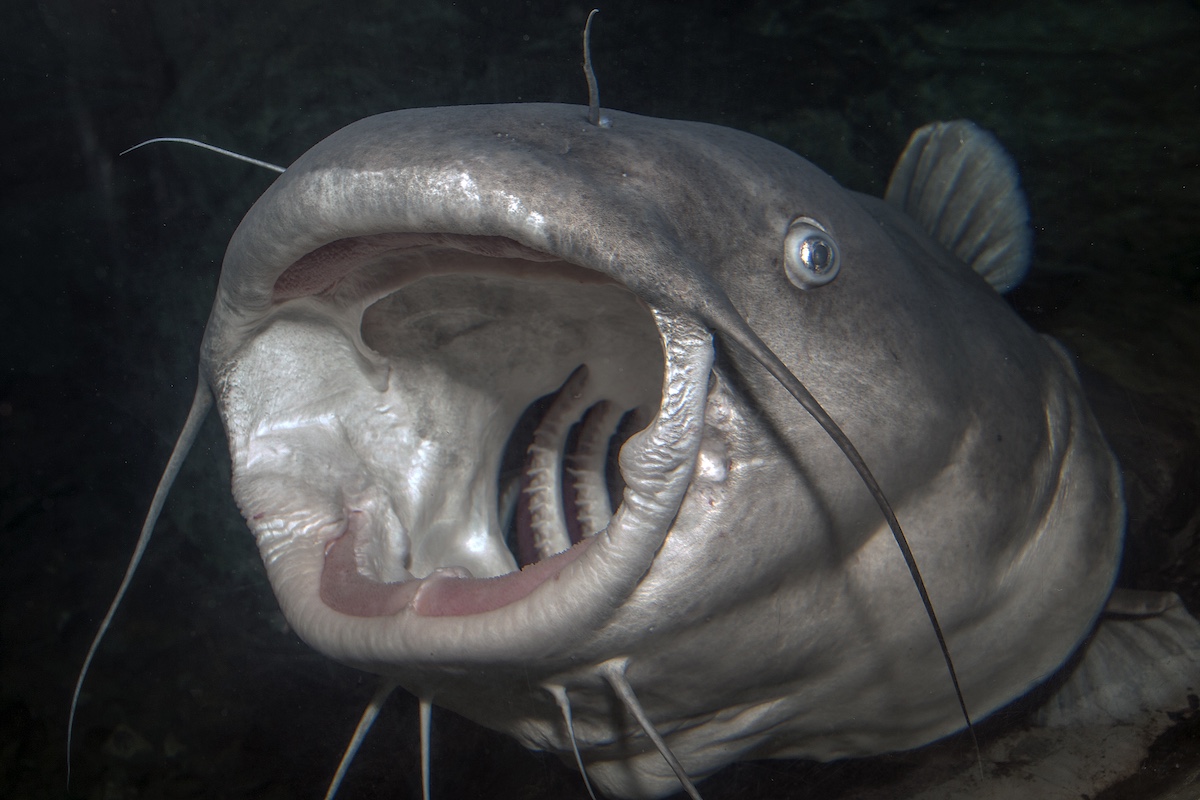

Channel catfish close-up. Photo by Michelson Fish Photography.
Channel catfish are a powerful and plentiful fish that can be caught on basic tackle and items from your local grocery store.
Recently, my staff and I were setting up for a youth fishing camp at a park district pond. As we prepared poles for the incoming campers, my instructor popped open the cooler. Sitting below the worm containers, ice packs and water bottles was a sleeve of cheap hot dogs. “Lunch,” she asked. “No, bait,” I replied. Twenty minutes, half a hot dog and a firm thump later, we landed a chunky catfish to show the campers. Such is the power of processed meat.
Catfish, like us, get cravings for cheap frankfurters. In fact, hot weather gives them a hankering for all kinds of food. Ask your local river anglers what their favorite bait is, and they’ll give you a whole menu to choose from. A father recently told my staff that he catches channel cats on chicken soaked in cherry-flavored powdered drink mix. Others say garlic shrimp is the go-to. A fishing buddy swears by sardines and bread. Talk to enough catfish anglers and eventually you’ll start to eyeball carts at the grocery store, wondering if shoppers are planning a BBQ or catfish trip.
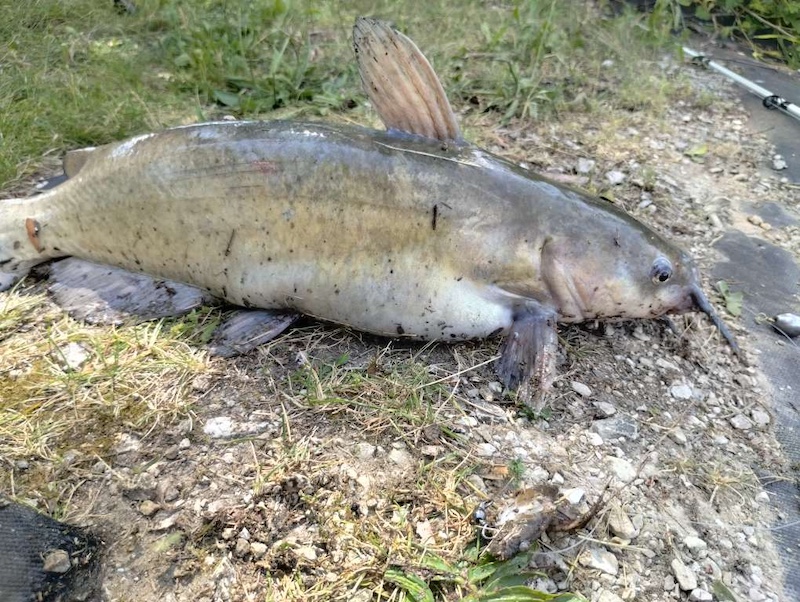
The summer BBQ lover of the fish world is the channel catfish (Ictalurus punctatus). Think of them like hungry relatives on the 4th of July, feasting on everything in sight. While larger catfish species, such as flatheads, eat lots of live animals, channel cats are omnivores, eating everything from fish and crayfish to aquatic plants. The most common and accessible of our catfish species, channel cats fight hard, taste good and offer laid back days of fishing. Found statewide in a variety of habitats, channels are the most targeted catfish in Illinois. Through natural reproduction and stockings of public waters by the Illinois Department of Natural Resources’ Division of Fisheries, these plentiful fish eagerly eat crazy, culinary creations.
There are good reasons anglers targeting channel cats choose the butcher counter over the bait shop. With their diverse diet and interesting anatomy, these fish are truly adventurous eaters. But, just like cooking, tantalizing their taste buds is only part of the presentation. Using proper techniques and the right equipment, even the pickiest of channel cats will come back for seconds, making for memorable days (and nights) of summer catfishing.
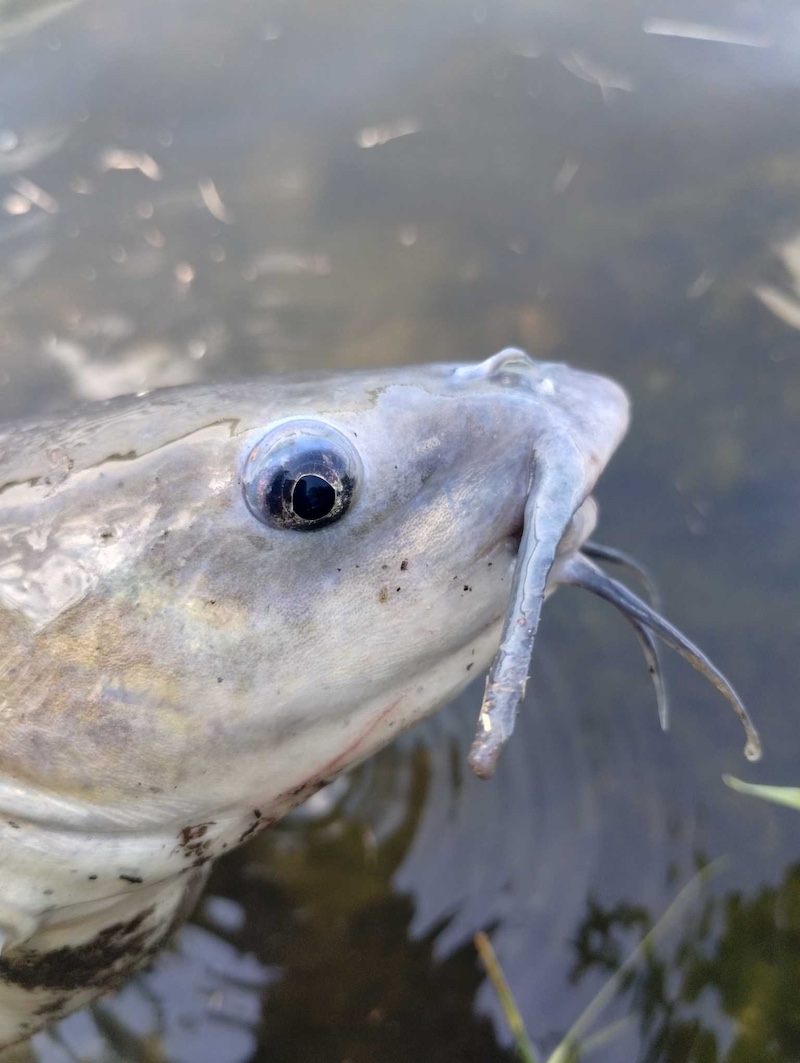
Unlike other predatory fish, channel catfish don’t eat with their eyes. Instead, they like to follow their tongues, which aren’t just in their mouths. In fact, catfish are covered in tastebuds, earning them the nickname, “swimming tongues.” A human has between 2,000 and 10,000 tastebuds but catfish can have more than 150,000 tastebud over the length of their entire body. In addition, catfish use their whiskers or “barbels,” to sense food. And while some anglers may tell you that these whiskers can sting you, they cannot.
Sharp, serrated spines that resemble steak knives, located in their dorsal and pectoral fins, can poke the unsuspecting angler. The whiskers, however, are strictly for feeling and tasting. Like their bodies, catfish whiskers are covered in taste buds and sensory cells, allowing them to smell food from afar. With their small eyes, catfish rely more on smell and feel than their eyesight, a good ability to have when living in murky or deep water.
Catfish are also known to have high sensitivities to amino acids, the building blocks of protein. This is especially true for “L-amino acids,” compounds found in living organisms. When these acids are released into water, say, when a chunk of fish or shrimp is used as bait, catfish senses get overly excited. This causes them to experience enhanced searching and feeding behaviors. Much like partygoers flocking to the smell of sizzling burgers, channel catfish excitedly swim over to investigate baits that smell like living or formerly living organisms, even hot dogs. For summer channels, baits with lots of scent are the key to consistent action.
In warm water, scents travel far and fast. This is because temperature affects the ability of chemicals to be released, including scent compounds. This is the reason hamburgers smell different when cooked over high flames vs. indirect heat. The same goes for catfish baits. Warmer water means more scent compounds are released and, catfish smell baits more easily. Great summer catfish baits are usually covered in scent and have lots of surface area to release all the tasty smells, enticing nearby catfish to have a bite.
Chicken livers are a cheap, effective and are found in most grocery stores. Drop one in water and it looks like a chicken scented bath bomb went off. Two downsides to chicken livers are that they fall off the hook easily and can attract bugs if left out. To fix these issues, store chicken livers in a zip lock bag or sealed container, putting them in a cooler or sealing the container when not in use. To toughen up chicken livers, sprinkle them on all sides with kosher salt or borax and allow them to sit on a tray in the refrigerator to harden overnight.
Shrimp are also an excellent choice and mimics channel catfish’s natural prey. Since catfish eat animals like snails, crayfish and mussels, shrimp are a perfect mimic to the native shellfish they love to snack on. Buy larger shrimp with their peel on to ensure they stay on the hook when casting.
Hot dogs are another cheap, readily available option. Catfish also don’t seem to discriminate between all beef and turkey dogs, but dollar store brands seem to work best. Instead of throwing a regular hot dog on the hook, jazz your dogs up with some sweet and sour flavors to really grab their attention. Cut your hot dogs into 1 ½ to 2-inch chunks and add them to a zip lock bag. Cover with water and add a packet of cherry-flavored drink mix, adding a sprinkle of garlic powder or anise. Compared to other baits, hot dogs have a much longer shelf life and store well in the fridge.
Cut fish, also known as cut bait, is a winning, year-round option for channel cats, but is only legal when adhering to the sizes or limits imposed on a water body. Whereas the previous baits mimic scents that catfish encounter, cut bait is an all-natural option. Using a sharp knife, cut a small bluegill, green sunfish, golden shiner, shad or sucker into 2-inch chunks. To increase the scent dispersal, use the head and middle sections where the brain and guts are. Remember when using cut bait to only use bait from the waterbody you are fishing and do not transport bait between locations. Store bought fish, like smelt and herring, also work.
Tubs of stink bait and live worms will also catch catfish, but both these baits have problems in the hot weather. For stink baits, special sponges and “dip worms” are needed to use the bait properly. With their runny consistency, stinkbaits need to be replaced often and can result in stinky coolers, camp chairs and clothing, especially if the contents splatter or splash. Live worms don’t do well in the summer heat and will quickly turn into worm soup if left outside a cooler. Small fish, like bluegill, will also peck at worms, leaving anglers with lots of nibbles and empty hooks, something sunfish have a hard time doing with larger, sturdier baits.
You can’t have a good meal without the proper presentation and utensils. For channel cats, that means long rods, bottom rigs and sharp hooks.
Good rods are medium to medium-heavy spinning or casting rods in 7- to 9-foot lengths. The longer length works wonderfully for bombing out baits into deep holes and offshore areas. If you are unsure of the rod’s length and action, look on the rod handle above the grip for letters and numbers that will indicate the rod’s length and action, usually displayed as a number, followed by a letter. For example, 7’ MH-S is a 7-foot, medium heavy spinning rod.
Pair your rod with a large spinning or push button (close faced) reel, in the 3000-5000 size. If you are unsure on reel size, ask a sporting goods outfitter or reference the package. Some reels even have the size listed on the spool. These reels can usually handle 10- to 25-pound test line. Many stores sell catfish combos; thick rods with gigantic reels, pre-spooled with line. If possible, avoid these and buy a lighter combo, as these “pool cue” rods are overkill for eater sized channels.
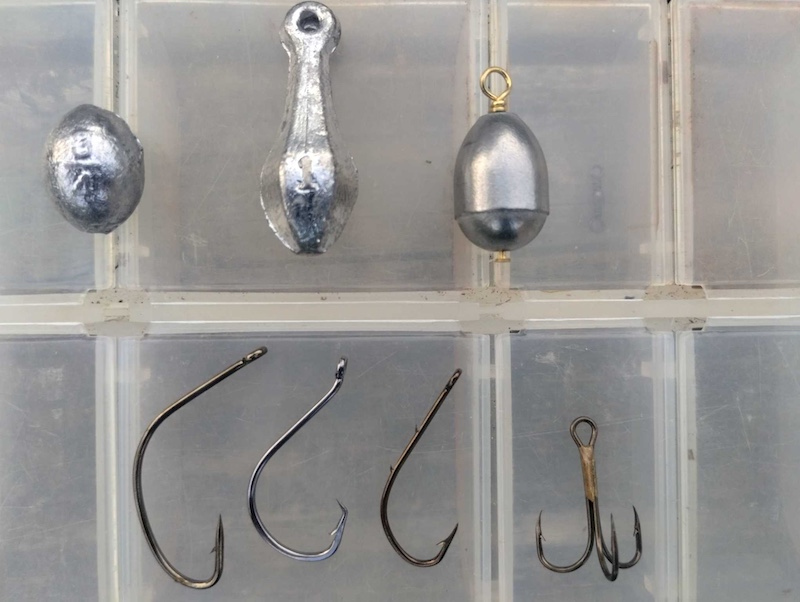
For line, stick with monofilament in the 12- to 20-pound range, with 12- to 14-pound test being ideal for most situations. Avoid heavy line (more than 20 pounds) and braided lines. If fishing near snags and structure, braided line can cause damage to your rod. At a recent fishing program, an angler using braided line snagged a stump, only to have their rod snap in half as they tried to free their bait. Monofilament is cheap, effective, catches fish and can be cut into small sections for leaders.
Although catfish are bottom dwellers, that does not mean anglers need to use very heavy weights. Egg, casting (bell) and bank sinkers in ¼ ounce to 1 ounce size work perfect. Using sinkers that are too heavy can result in fish feeling resistance and dropping baits and rigs getting snagged on the bottom. Unless baits are in heavy current or very deep water, weights more than 1 ounce are usually unnecessary and can snap smaller rods if a bad cast is made.
Hooks also don’t need to be overly large. Kahle, “J” (baitholder) and circle hooks in size #2 to #2/0 are perfect for most channel catfish trips. Treble hooks in sizes #4 to #1 can also be used for fragile baits like hot dogs and chicken livers, ensuring they stay secure on the hook.
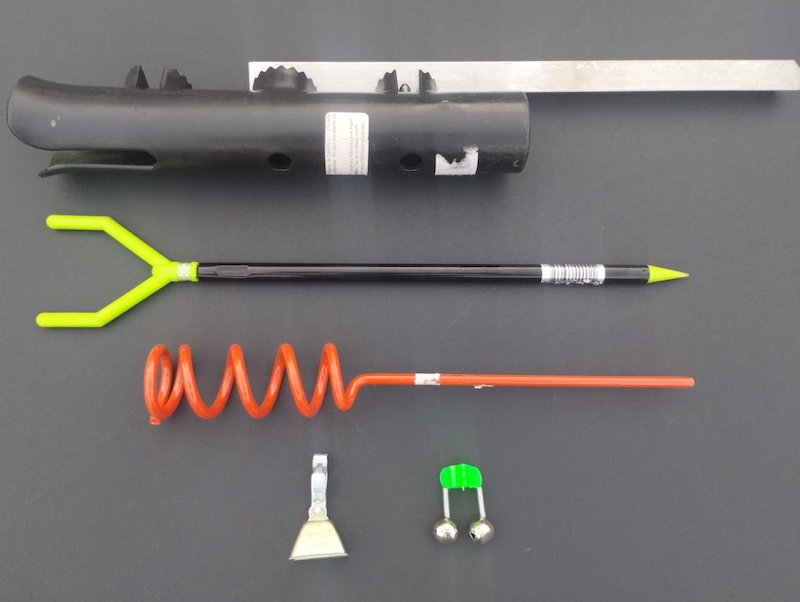
There are two other essential items for catching limits of channel catfish. One is a good rod holder. Most shore anglers forego the store-bought holders and make their own from piles of rocks and forked sticks. They will also leave them behind for future anglers to use. Finding used rod holders stuck in the bank of a lake or river is a great way to find catfish spots.
An extremely useful item is a bite alarm. While not necessary, catfishing involves sitting, waiting and, sometimes, a nap. Attaching a small bell or electronic bite alarm to the tip of your rod is a great way to listen for bites while taking a summer snooze, reading a book or organizing your tacklebox.
Like the secret ingredient in grandma’s apple pie (it’s nutmeg!), following these tips and tricks will make your presentations even more irresistible to hungry channel cats.
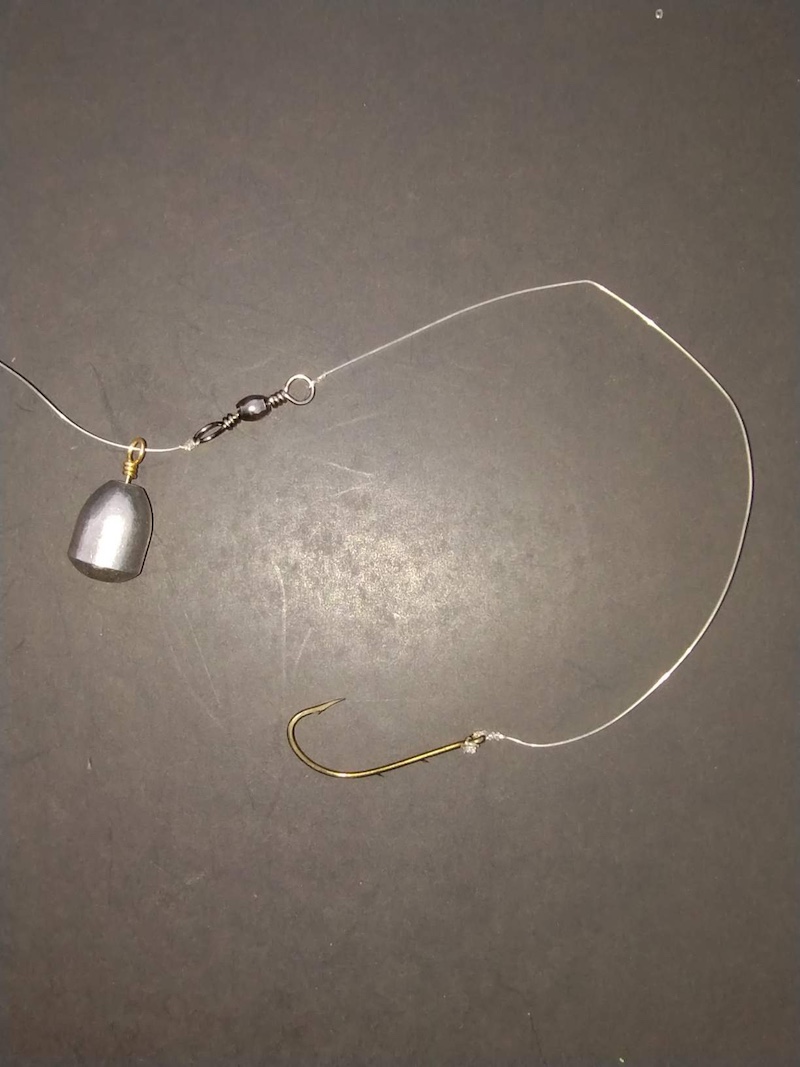
You can also remove the rod from the holder, reel up some of the slack and feel for resistance. That’s when you set the hook. Often a catfish will bump or “nose” a bait, coming back to eat it a few minutes later. There are times when catfish will immediately eat, but channels like to have a taste before fully committing. Even adventurous eaters can be choosy sometimes!

Like a backyard BBQ, summer catfishing is all about spending time outdoors with friends and family. And, like a BBQ, there are tons of other activities you can do while waiting for the big bite. Some examples include taking a nap, listening to the ball game, playing yard games, building a campfire, unplugging from social media, talking to a relative, taking another nap, finishing your novel, grilling, birdwatching, working on your tan and watching the grass grow. And making sure to read all the other, awesome articles from OutdoorIllinois Journal.
Fishing for summer channel catfish is a great way to relax outside while using common groceries to catch a catfish dinner. These powerful fish will not only make lifelong memories but provide plenty of tasty fillets for the low price of half a hotdog. Grab your favorite lawn chair, a forked stick, a big bottle of water and your protein of choice to tussle with some tasty channel cats this summer. And don’t forget your bite alarms, as a good catfish trip isn’t complete without lots of ringin’ dinner bells!
The author, Frank, also loves catfish, whether he’s teaching his students how to safely handle them, fishing for them down at the river or eating them fresh out the frying pan (or ‘po boys….mmm mmm).
Frank Sladek is the Urban and Community Fishing Program Coordinator for Northern Illinois. His program offers free fishing clinics, aquatic resource education classes, school programs and IDNR displays at nature and children’s events for residents north of I-80, outside of Chicago.
Submit a question for the author